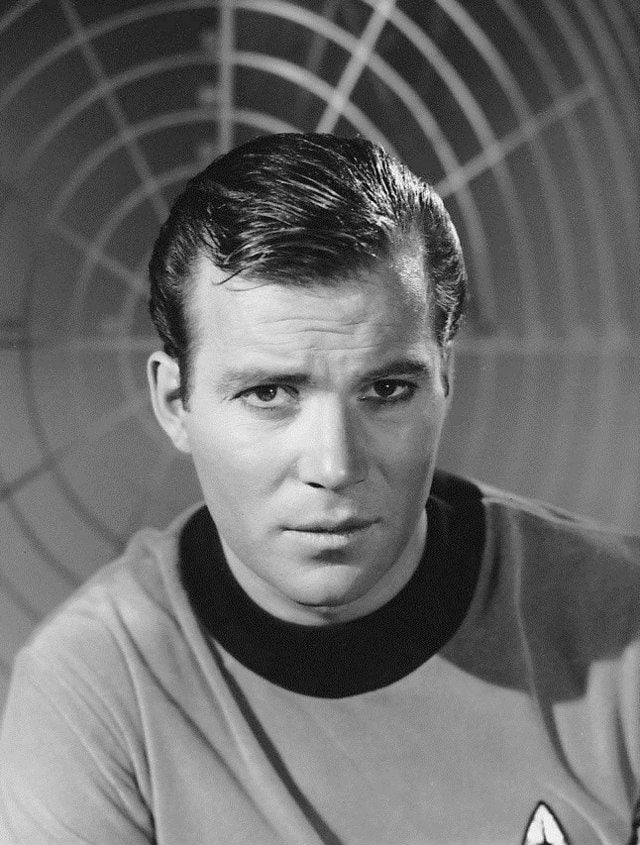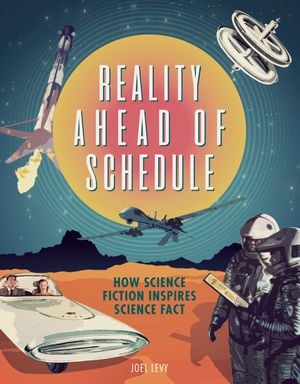The Influence of Star Trek and Science Fiction on Real Science
For Star Trek Day, learn about the relationship between sci-fi and real-life science in this excerpt from “Reality Ahead of Schedule”
:focal(800x602:801x603)/https://tf-cmsv2-smithsonianmag-media.s3.amazonaws.com/filer_public/b0/96/b096b98c-3581-4361-a150-3b7e655816b9/starship_enterprise.jpg)
A machine set into the wall, resembling a large built-in microwave with its door missing, responds to this command by materializing a fine bone china teacup on a saucer, filled with steaming hot tea. This remarkable device is a replicator (aka molecular synthesizer), a machine that can create almost anything out of thin air, but is particularly used for food and beverages.
As with several other iconic Star Trek technologies, replicators are directly responsible for inspiring developments in real-life technology, which use 3-D printing to create food, meals, plastic and metal items, buildings, and even complex machine parts. Star Trek is far from being the only sci-fi source of inspiration for the dream of a device that can produce finished items from scratch.
To trace the roots of Star Trek’s replicator, it is necessary to understand that it is essentially a repurposed form of the transporter—the teleportation or matter transmission device that “beams” the crew between starship and planet surface. According to legend, the transporter was invented only because the original series lacked the budget to film special, effect-heavy scenes of planetary landing shuttles, but Star Trek did not invent the concept of matter transmission. Its first appearance in science fiction dates back at least as far as 1877, in Edward Page Mitchell’s story “The Man Without a Body,” which prefigures George Langelaan’s much better-known 1957 story “The Fly,” by having a scientist experience a teleportation mishap when his batteries die while he is only partway through a transmission, so that only his head rematerializes.
The replicator uses the same basic principle as the transporter, in which the atomic structure of a physical object is scanned and the information is used to reconstruct the object at the “receiving” end through energy-matter conversion. In practice, all transporters are replicators and matter “transmission” is a misnomer, because matter itself is not transmitted, only information. Every time Captain Kirk steps out of the transporter having “beamed up” from a planet’s surface, it is, in fact, a copy of him—the original has been disintegrated during the initial phase of the operation.

In the world of the TV series, the replicators of Picard’s Enterprise are a development of food synthesizers— simpler machines present on James Kirk’s Enterprise in the original Star Trek series (known as The Original Series, or TOS). These closely resemble the later replicators but were conceived by the writers of TOS more as highly advanced, mechanical food preparation devices instead of matter-energy converters. They, therefore, represented a televisual outing for a concept long popular in science fiction: the automatic food preparation device. A machine that performs complex autonomous physical tasks can reasonably be described as a robot, and, as early as 1899, Elizabeth Bellamy’s novel Ely’s Automatic Housemaid features a robot cook, which might be seen as a precursor to later food synthesizers.
Unspecified “mechanical apparatus” was at work in the automated cafeterias of Edgar Rice Burroughs’s Mars. In his 1912 A Princess of Mars, Burroughs, probably inspired by the automat (a kind of vending machine café imported from Germany to the United States in 1902), describes “gorgeous eating places where we were served entirely by mechanical apparatus. No hand touched the food from the time it entered the building in its raw state until it emerged hot and delicious upon the tables before the guests, in response to the touching of tiny buttons to indicate their desires.”
Moving from Burroughs’s mechanical cafeterias to a Star Trek-style food synthesizer was simply a matter of miniaturization, and, by 1933, David H. Keller was imagining “a small but complete production laboratory, not much larger than [an] electric refrigerator … entirely automatic and practically foolproof.” In his story “Unto Us A Child Is Born,” Keller envisages a machine that can both create food and prepare it “for the table in any form desired by the consumer. All that was necessary was the selection of one of the twenty-five menus and the pressing of the proper buttons.”
Only recently has this dream of a kitchen appliance-scale food synthesizer neared reality, with the launch of the Genie food replicator, explicitly inspired by Star Trek’s replicator. The Genie, a device not much larger than a microwave with futuristic styling, claims to be “a kitchen in a box” that can make nutritious, freshly cooked meals in 30 seconds. However, it should be noted that the device relies on pods that contain dehydrated ingredients; in other words, the food preparation labor has simply been moved upstream in the process, and the Genie might be little more than a device for adding hot water to a cup of dried noodles.
The devices displayed in Star Trek purport to work by converting energy into matter. This is problematic, because although Albert Einstein’s famous equation E = mc2 shows that energy and matter are interconvertible, being simply two sides of the same coin, there is a considerable gap between this fundamental principle and any realistic prospect of human control of the process in the manner suggested by a replicator. For example, the amount of energy needed to create a cup of tea is equivalent to about 6 megatons of TNT, or about four hundred times the yield of the atomic bomb dropped on Hiroshima in 1945. Even if we allow that in the fictional future universe of Star Trek such energies can routinely be deployed, the picture is different in the real world of today.
Currently, humans can just about manage conversion of infinitesimal amounts of matter into energy in the environs of a nuclear reactor or bomb. Running the process in the other direction can be achieved only in the collision chamber of a giant collider, such as the Large Hadron Collider (LHC) at CERN in Geneva. In this rarefied environment, by accelerating particles to near-light speeds, a handful of subatomic particles can sometimes be smashed into fleeting existence: a long way from a cup of Earl Grey tea.
/https://tf-cmsv2-smithsonianmag-media.s3.amazonaws.com/filer_public/97/87/9787a907-dd0b-4106-9b64-6e4c849f0ff8/3d_printer.jpg)
So what is meant by today’s technology boosters when they talk excitedly about Star Trek-inspired, real-life replicators? The technology to which they refer is the 3-D printer, a device that lays down some form of plastic (in the sense of malleable) medium in layers to build up a three-dimensional form. Such printers are heralded as the drivers of a second Industrial Revolution, in which manufacturing is distributed and universal, available to all through desktop 3-D printing machines. These devices are already available, usually restricted to fabrication using quick-setting plastics or resins, but larger and more specialized machines can print in media varying from living cells and foodstuffs to metal to mud or concrete. Large-scale concrete printers, for example, are suggested as a solution to housing crises, such as those found in refugee camps, where rapidly assembled, cheaply erected structures are needed. Meanwhile, biological implants and replacement tissues can be printed by laying down layers of cells on organic scaffolding, and, in the near future, it may be possible to print entire organs for transplant.
Although the 3-D printing community often plays up the lineage of inspiration from Star Trek’s replicators to desktop fabricators, in practice, the former has a completely different mechanism. The true conceptual forefather of the 3-D printer is a 1964 story by Italian writer Primo Levi, “L’ordine a buon mercata” (“Order on the Cheap”). A mysterious multinational enterprise of dubious intentions makes available a device called the Mimer duplicator, which can create exact replicas of anything from money and diamonds to food and humans. It works by extruding “extremely thin superimposed layers” of a multielement substance named “pabulum.” This is a concise and extremely accurate description of how a modern-day 3-D printer works.
Star Trek featured gadgetry and devices that have since become iconic, and that have been directly responsible for inspiring the gadgetry and devices that have come to dominate modern personal technology—including the smartphone and the tablet computer—and perhaps soon to include portable, personal medical devices. Science and technology sometimes progresses in mighty leaps, but more generally it advances incrementally, contingent on prior research.
Reality Ahead of Schedule: How Science Fiction Inspires Science Fact is available from Smithsonian Books. Visit Smithsonian Books’ website to learn more about its publications and a full list of titles.
Excerpt from Reality Ahead of Schedule © 2019 by Carlton Books Limited

